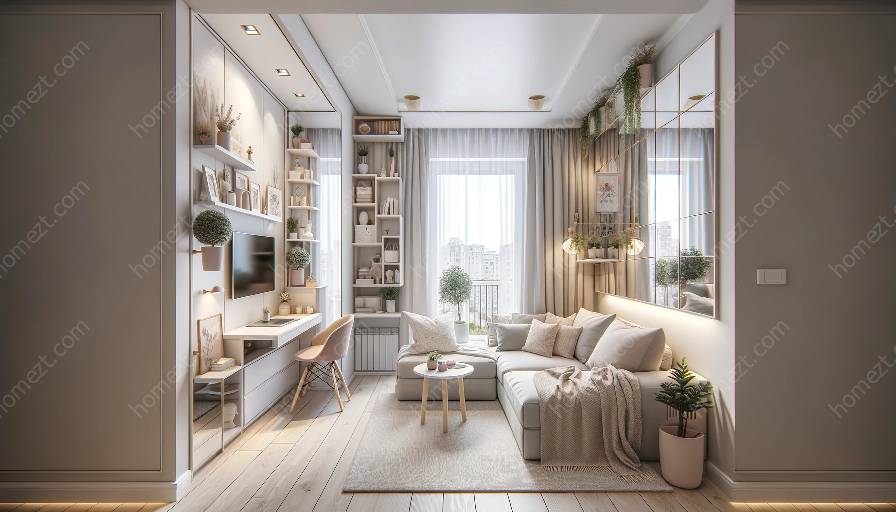Living in a small space doesn't mean you have to sacrifice comfort and style. By applying ergonomic principles, utilizing small spaces effectively, and incorporating smart design, you can create a functional and beautiful living environment. In this comprehensive guide, we'll explore the key ergonomic principles for small living environments, provide tips on utilizing small spaces to their maximum potential, and offer creative decorating ideas to enhance your compact living space.
Ergonomic Principles for Small Living Environments
Ergonomics is the science of designing and arranging objects and spaces to fit the capabilities and limitations of the human body. When it comes to small living environments, ergonomic design becomes even more critical to ensure that the space remains comfortable, efficient, and aesthetically pleasing. Here are some essential ergonomic principles to consider:
- Adaptability: Choose furniture and fixtures that can serve multiple purposes to adapt to the changing needs of a small space. For example, a foldable dining table can also serve as a workspace or extra counter space.
- Space Efficiency: Opt for compact and space-saving furniture to maximize available space. Look for items with built-in storage solutions to reduce clutter and enhance organization.
- Comfort and Support: Prioritize ergonomic seating and sleeping arrangements to ensure proper support and comfort, even in limited spaces. Utilize ergonomic pillows and cushions to enhance comfort without sacrificing space.
Utilizing Small Spaces
Small spaces require creative strategies to make the most of every inch. Here are some practical tips for utilizing small spaces effectively:
- Vertical Storage: Maximize vertical space by installing shelves, wall-mounted cabinets, and hanging organizers to keep items off the floor and create a sense of openness.
- Multipurpose Furniture: Invest in furniture pieces that offer dual functionalities, such as sofa beds, convertible coffee tables, and nesting tables, to optimize space usage.
- Compact Appliances: Consider downsized and multifunctional appliances that can fit seamlessly into small kitchens and utility areas, saving valuable space without sacrificing functionality.
- Organizational Systems: Implement smart organizational systems, such as drawer dividers, closet organizers, and under-bed storage solutions, to streamline and declutter small living spaces.
Decorating for Small Spaces
Decorating a small living space can be both challenging and rewarding. By following these decorating tips, you can elevate the style and functionality of your compact home:
- Light Colors and Mirrors: Use light, neutral colors and strategically placed mirrors to create the illusion of more space and reflect natural light, making the room feel brighter and more open.
- Multifunctional Decor: Choose decorative pieces that also serve a purpose, such as ottomans with hidden storage, decorative baskets that double as storage solutions, and wall-mounted shelves as both decor and functional storage.
- Plants and Greenery: Incorporate indoor plants and greenery to bring life and freshness to small spaces, adding visual interest and a sense of natural tranquility.
- Functional Lighting: Invest in versatile lighting fixtures, such as adjustable wall sconces and task lamps, to create ambient and task-specific lighting that enhances the functionality and atmosphere of a small living space.






































